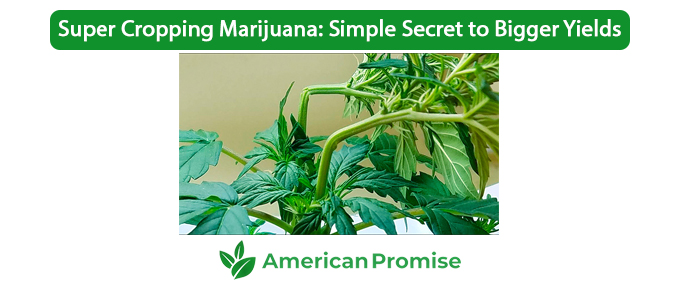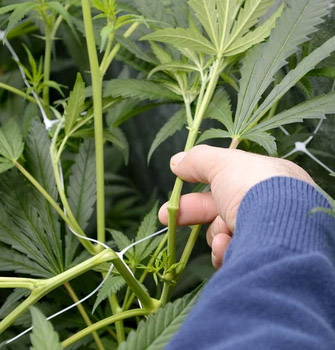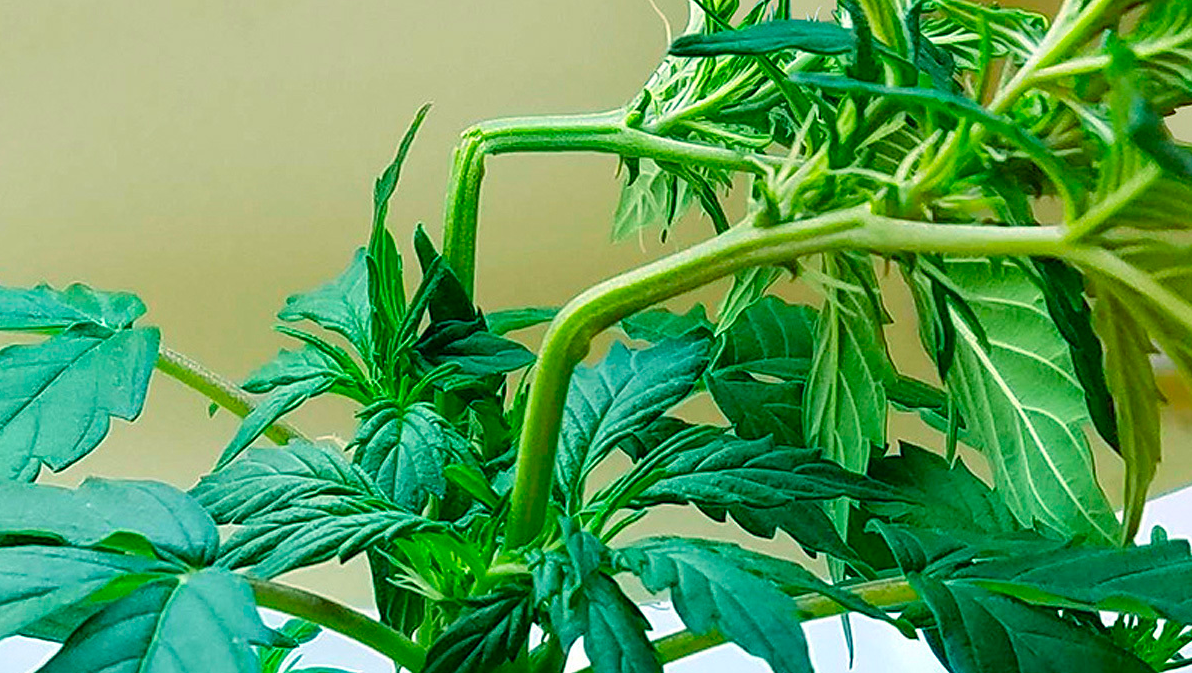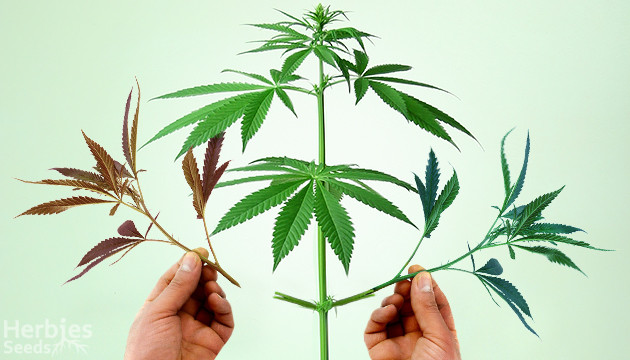We occasionally recommend products we love and might be paid a share of the sale.
The current global trends of growing marijuana and experimentation with the plant have made it one of the most popularly cultivated crops. Cannabis is famous for its cannabinoids like Tetrahydrocannabinol (THC) that provides psychoactive effects. The plant to protect itself from predators produces this THC. Therefore, when the plant is enough stressed or injured, it increases the production of THC to make the best effort for protecting itself.
If you are into growing cannabis, then you must be aware of the tricks that are used by cannabis cultivators all over the world to accelerate the growth of the plant and derive the maximum yield from it. The techniques that are used to enhance the yield are known as training techniques. The training techniques can be broadly divided into two further categories known as High-Stress Training (HST) techniques and Low-Stress Training (LST) techniques.
LST techniques are subtler ways to increase the production of cannabinoids without subjecting the plant to too much risk or damage. On the other hand, HST techniques are those, which involve the risk of damaging the plants but can lead to higher yield in a short time. Super cropping is one of the popular and conventional high-stress training techniques. This method is adopted widely because of its high returns if managed to done properly. Super cropping can result in the crop producing large colas. Moreover, if you end up hurting the plant too much, you can patch it up using duct tape. For a better understanding of the super cropping technique, go through this article.
What is Super Cropping?
Super cropping refers to the cropping technique in which the plant is stressed manually by injuring the plant tissues with deliberate force. This technique can result in the plant producing more buds and being bushier. Moreover, the plant seeds can be more fertile and potential. Therefore, if you have chosen the process of super cropping, then you must know about the knit and grits of the process.
It is a technique, in which the plant is bent or folded to reduce the plant height or reposition the branches, stems, or colas. While in super cropping, the stem is pinched for softening the internal core of the plant. This will make the outer fiber of the plant pliable. When you pinch the plant, you have to fold it at the same place for repositioning the stalk. Initially, the stalk might require support but the plant will return to an upright position soon. Therefore, the stalks that have been folded should also be restricted to their new position.
What is the purpose of Super Cropping?
There are a few potential reasons to apply the technique of super cropping. One of the most important reasons includes managing the growth of the plant at the time of stretch. If you have trained the plant to produce multiple colas, then the process of super cropping can come in handy for keeping the plant at a uniform distance from the light. The technique of super cropping can also be used to modulate the plant growth in the particular areas where the light is being underutilized. Moreover, during the time of vegetative growth, super cropping can be efficient for creating structures called manifolds and mainlines.
Super cropping can also be useful for growers who face the problem of individual stalks growing higher than the canopy. These individual stalks are the too high colas that require the grower to raise the light or focus it on them resulting in the canopy not being able to get optimum light for effective growth. Moreover, the taller stalks can also shade the lower portion of the canopy and affect their growth. Furthermore, the stalks can grow too tall in comparison to the space in which they are growing. Super cropping can reduce the height of the towering colas and restrict them to maintain an even height of the canopy. Nonetheless, super cropping leads to improved chances of more growth points like stalks and buds.
Super cropping the Cannabis
There are two fundamental steps of super cropping cannabis plants. To begin with, you have to pinch the plant and fold it. The plant should be pinched and folded perpendicularly, gently. Once done with the fold you must tie it softly, which results in restraining the stalk. It can be stated here that the colas can be brought down for as much as 8-10 inches. The distance between the tie-down and the canopy determines the effectiveness of the process as the new cola will come out of that location. Now, let us look into the steps of the process of super cropping.
-
Super Cropping
You need to select the most convenient branch for super cropping. This is because not all plants respond to the process of super cropping similarly. Initially, it is recommended to start with a few branches to observe how the plant responds to the stress technique. One of the best timings to practice super cropping is during the vegetative or growth stages of the plant. Typically, it is around the second or third week of the growth stage that results in the best yield.
You should remember that all cannabis plants require at least one to two weeks to reach the highest vegetative state. Moreover, the stage can be indicated when the plant is shooting out branches but has not reached into the flowering state yet. Growers must understand that the growth curve starts diminishing once the plant starts flowering. Moreover, it is also recommended that when choosing stems for super cropping, choose the ones that are mature but green and supple at the same time. The ideal location on the stem for super cropping would be the area between the two leaf nodes.
-
Maneuvering the Branch
Once when you are done with the selection of the right spot hold the area and gently pinch so that the inner tissues of the plant are injured and then rotate the stem or branch carefully. It must be noted here that the rotation should be done by half a turn. This will make the branch pliable and you can make it face in any direction you want to. You should always make the plant face the light. Moreover, it is crucial to be careful that the plant is not injured in any other outer way. The bending should be done unless the inner part of the branch or the inner woods snaps a little. You might not be able to do the perfect cut if you are an amateur.
An over-injury can always be handled with grafting tape. Moreover, cannabis is highly resilient and can heal itself in no time. Therefore, it is always recommended to do the bruising with time and patience. As heavily bruised or an outwardly bruised plant will not result in the desired outcome of a good yield. A correctly done super cropping technique will make the plant appear as if it has been broken with the twisted stem down and resting. This shall result in the plant being optimally stressed to produce more colas and leaves.
-
Grafting
Grafting is not a necessary step and shall not be required if the bending of the plant is done properly without bruising the outer portion of the plant. However, if you are growing cannabis for the first time, then you might bruise the plant heavily while trying to apply the technique of super cropping. Such a severely damaged branch shall be treated with grafting tape or duct tape. This will provide strength to the damaged branch and enhance the process of healing. You can also check for the healing of the plant, as the injured area will grow a woody nodule around it. Once you are done with the grafting of the injured stem, you can put a bamboo strip in the pot to support the super-cropped branch steady and prevent it from breaking accidentally.
-
Checking for results
This is the last step that involves waiting for around a week and a half before the removal of the tape. The bruised area might be slightly discolored. However, if you feel that the plant has not healed properly, then the tape should be replaced. Wait for complete healing. One of the signs of complete healing is that the damaged area will thicken. Moreover, new branches will also come up that shall be tied down. In this way, the plant is trained to grow in a given space and produce more buds and branches.
FAQs
Is Super Cropping an HST or an LST technique?
Super Cropping is a high-stress training technique.
Is Super Cropping effective?
Yes, Super Cropping is effective if properly implemented.
What is the key to a proper super-cropped plant?
The key to a proper super-cropped plant is patience and taking good care of the plant. Proper grafting, water, and light are necessary for the plant.
How many times can you super crop?
Ideally, when it comes to super cropping, you can do it twice with the same crop. However, it is better to wait for around 2 weeks after the flowering before you do it again. This retains the vitality and the yield of the crop that you are growing. Once the flowering is done, it is ideal that you let the plants recover and feed or water from the process first.
Can you super crop autoflowers?
Yes, super cropping autoflowers is possible. And, this is something that the majority of auto growers do indulge in the same from time to time. Ideally, it is better to use the super cropping method if the central bloom of the crop is growing significantly faster or taller compared to the other parts of the plant.
Is super cropping necessary?
Super cropping is quite a popular and recent technique that most cannabis growers are tapping into. However, we’d recommend that you analyze the rate of growth of your crops before you end up using the super cropping method. This allows the growers to produce bigger yields with varying branching out of the area.
Do you trim the plants during super cropping?
Super cropping is a very easy way to promote the faster and quicker growth of the plants. So, you might find the centra bloom growing at an exponentially high rate. In such cases, trimming the excess plant or branches is considered ideal. This contributes to high-quality yield with dense budding.
Can you super crop in flowers?
Super cropping is a very advanced and high-stress training method that can optimize the yield in a marijuana plant in the limited available space. So, not just in the marijuana plant, this technique applies to the flowers too, in case you are on the lookout for it.
Conclusion
The above-mentioned steps are the secrets to a higher yield in regards to growing cannabis. It should be noted here that the complete process might take about four to six weeks and it is essential to have patience throughout.
I’m an avid gardener and cannabis enthusiast. You can usually find me in my garden caring for my plants or at my computer crafting helpful blogs for my readers.
Contents




